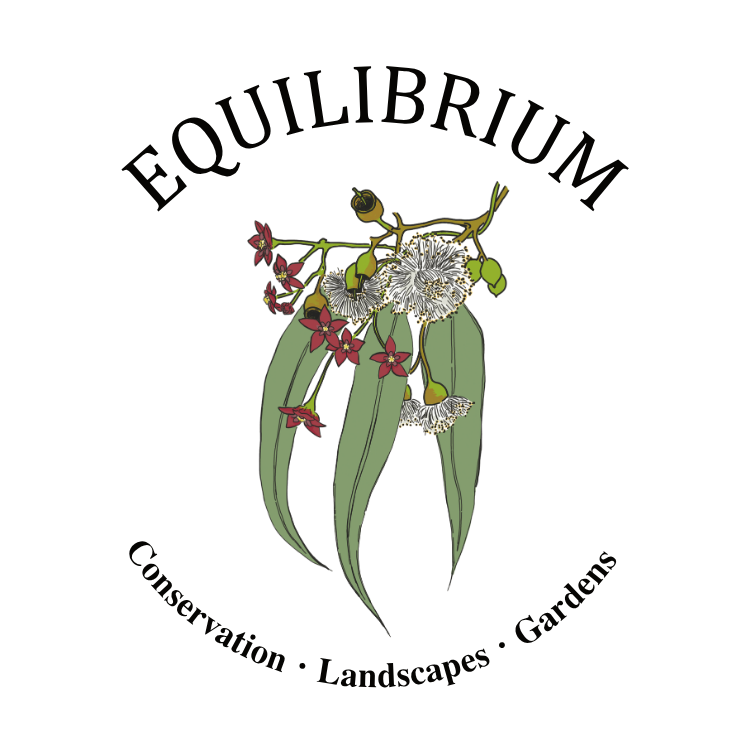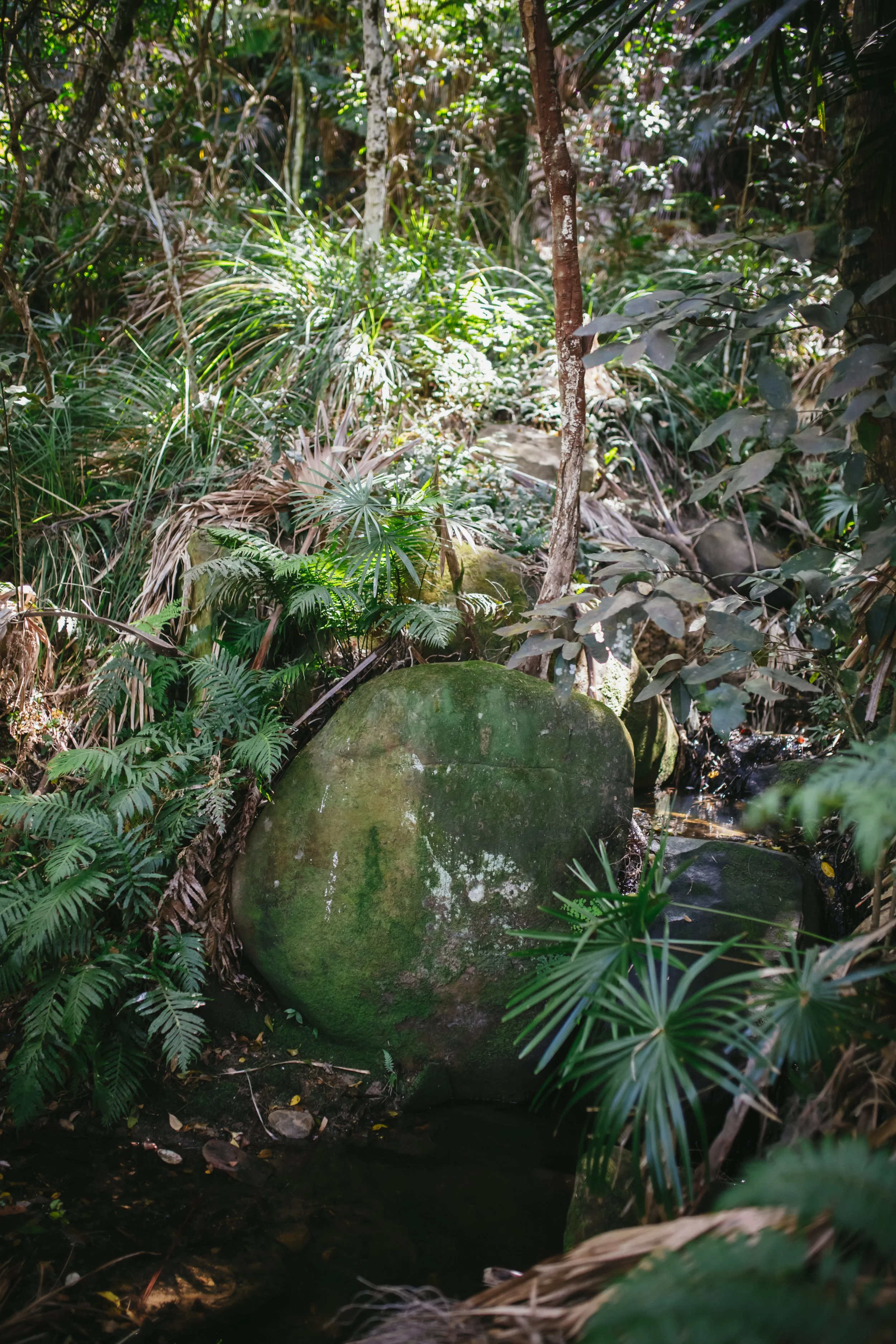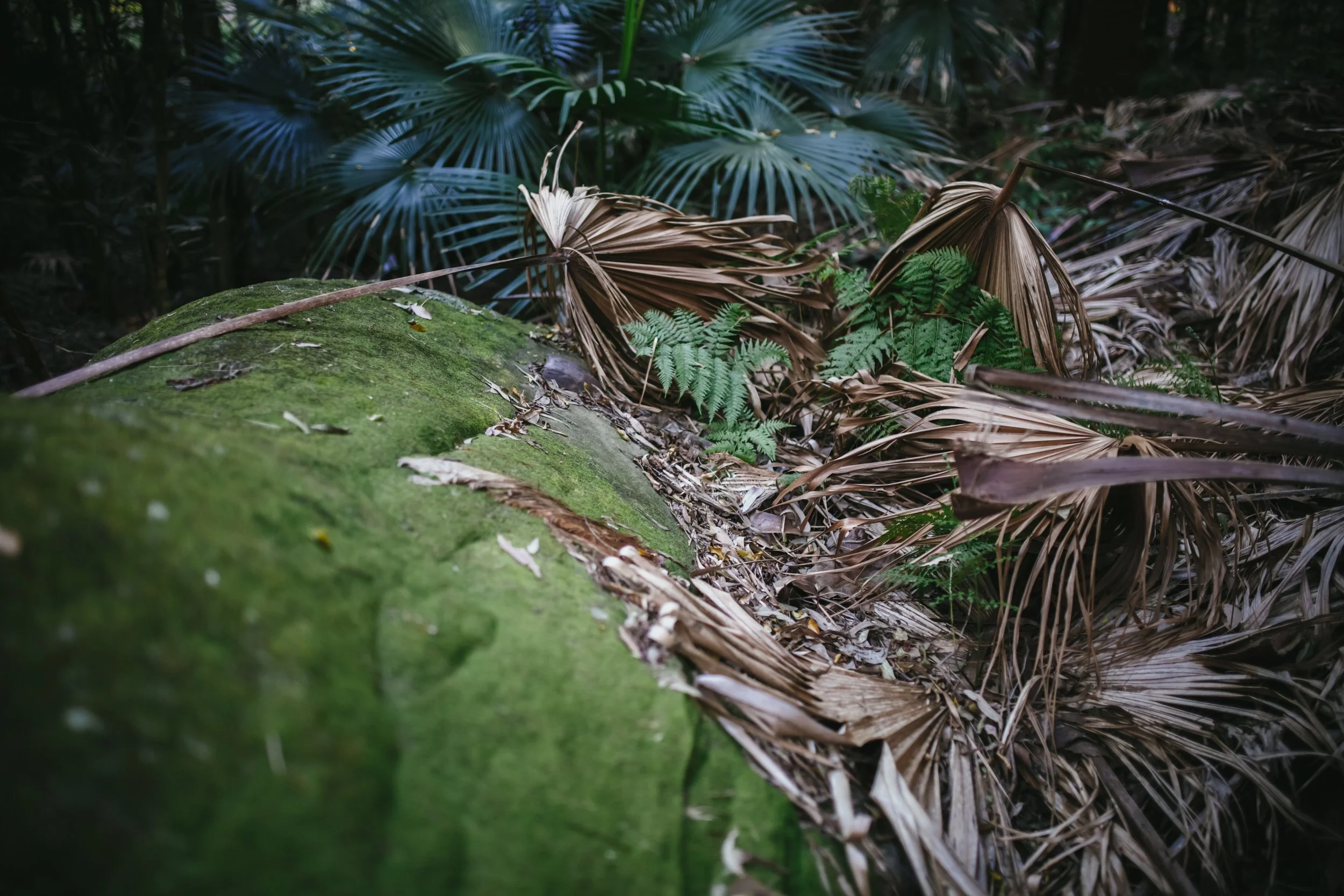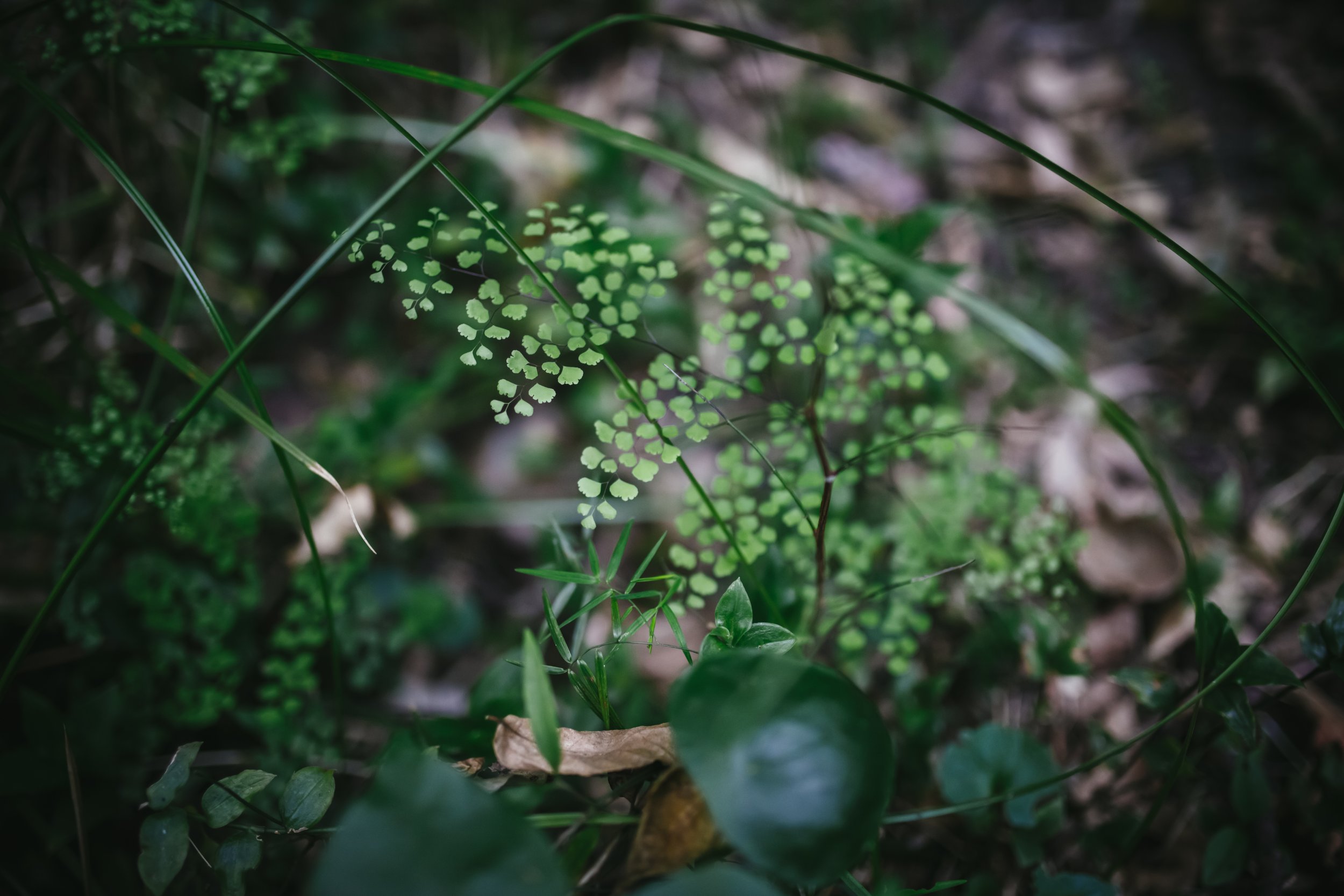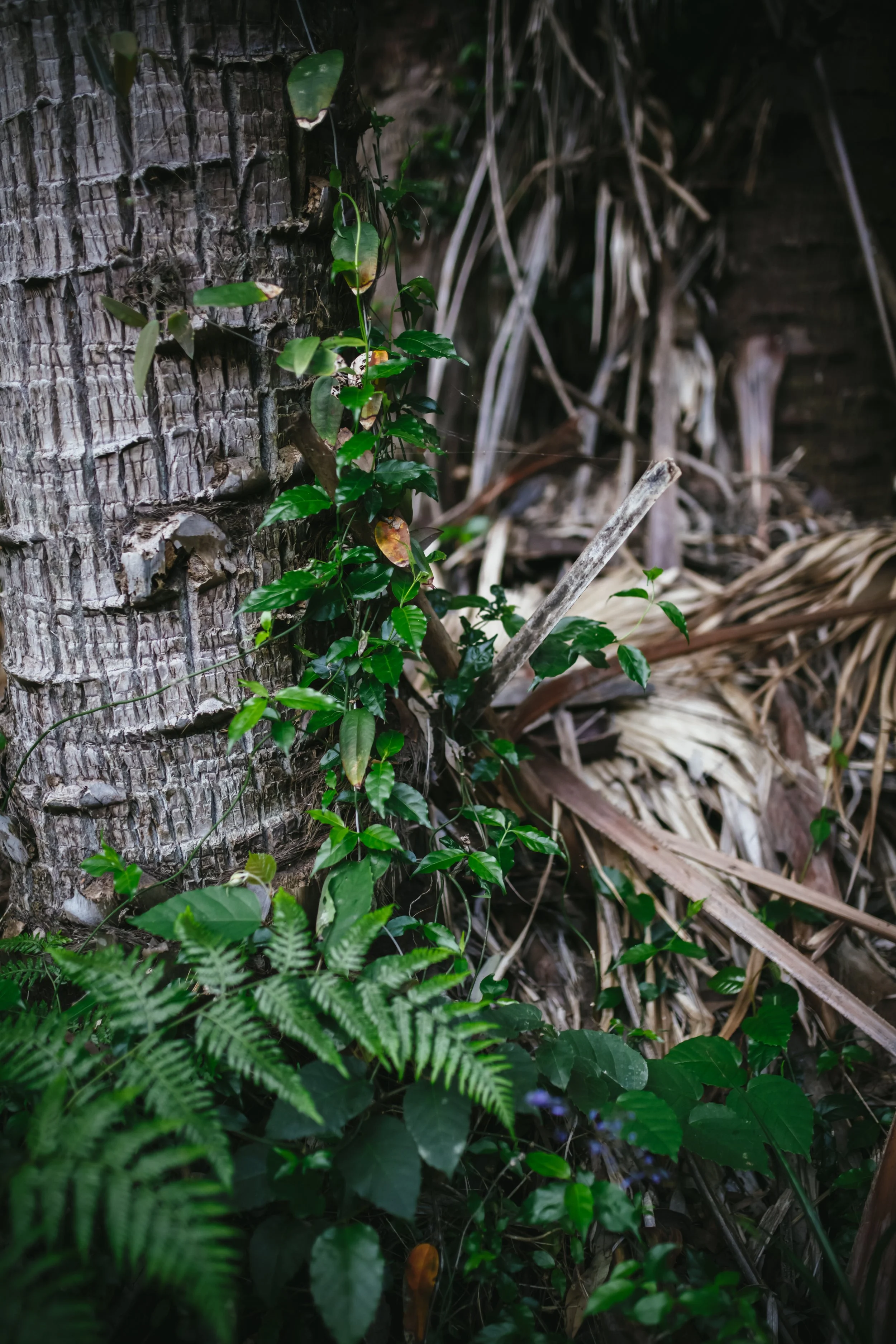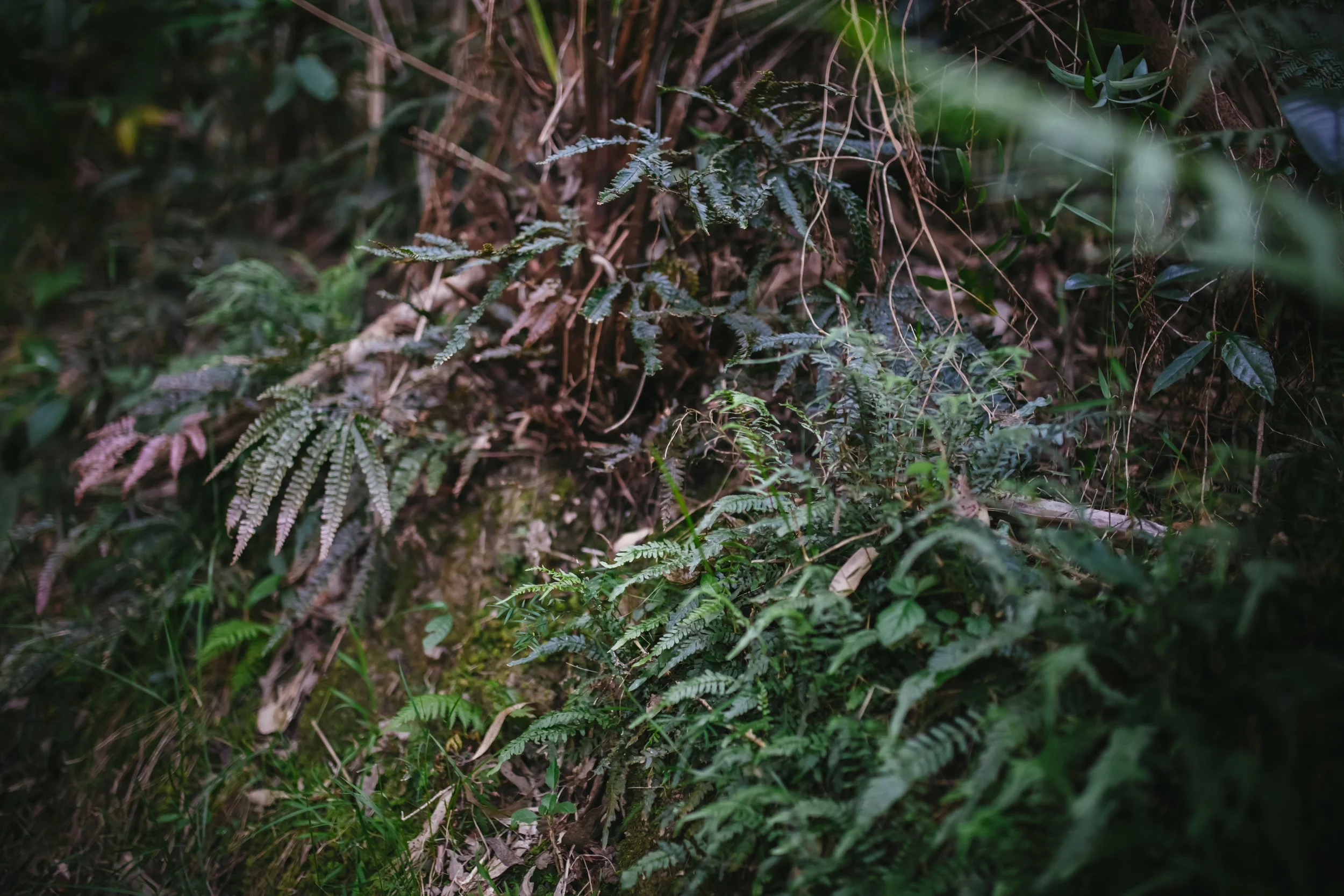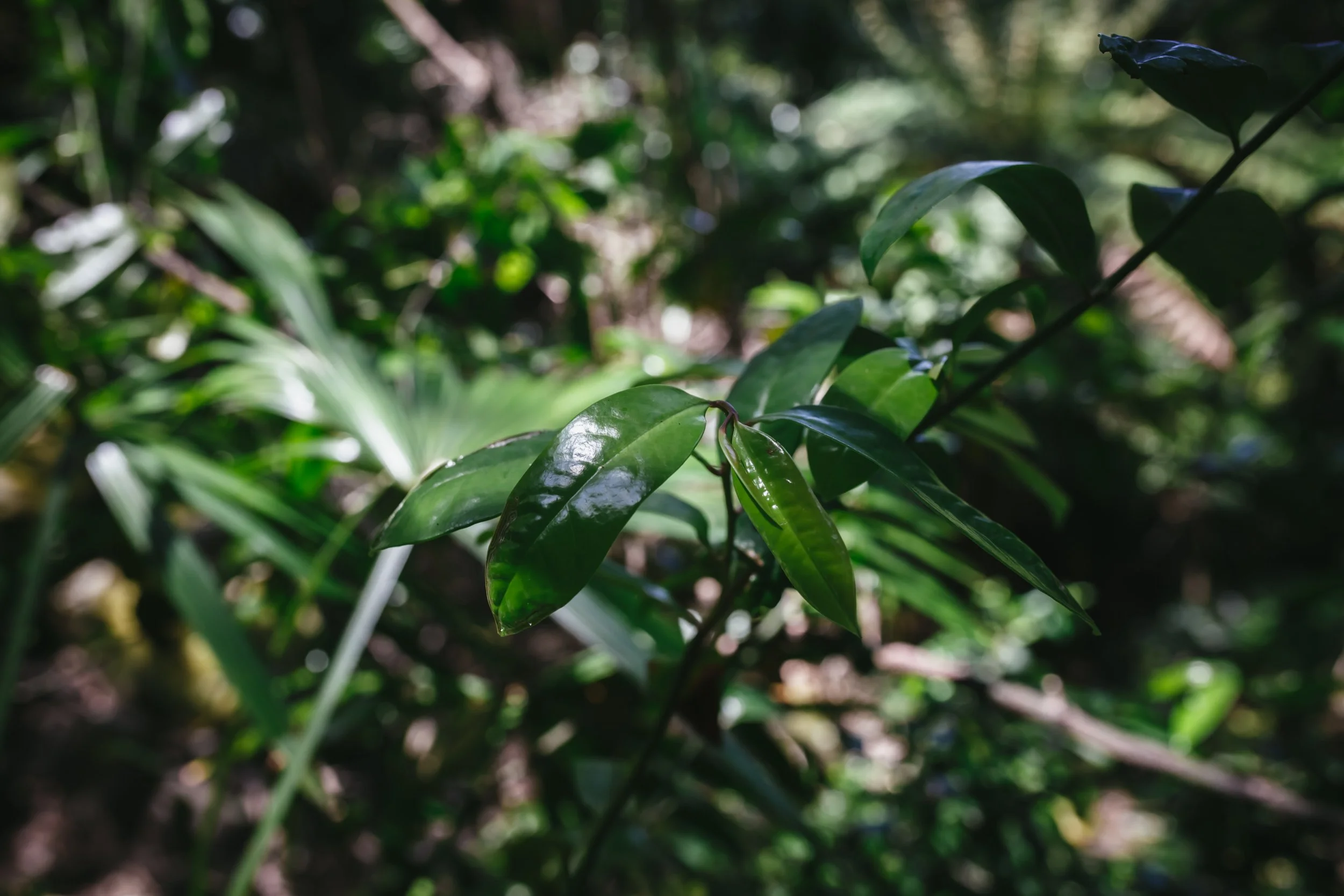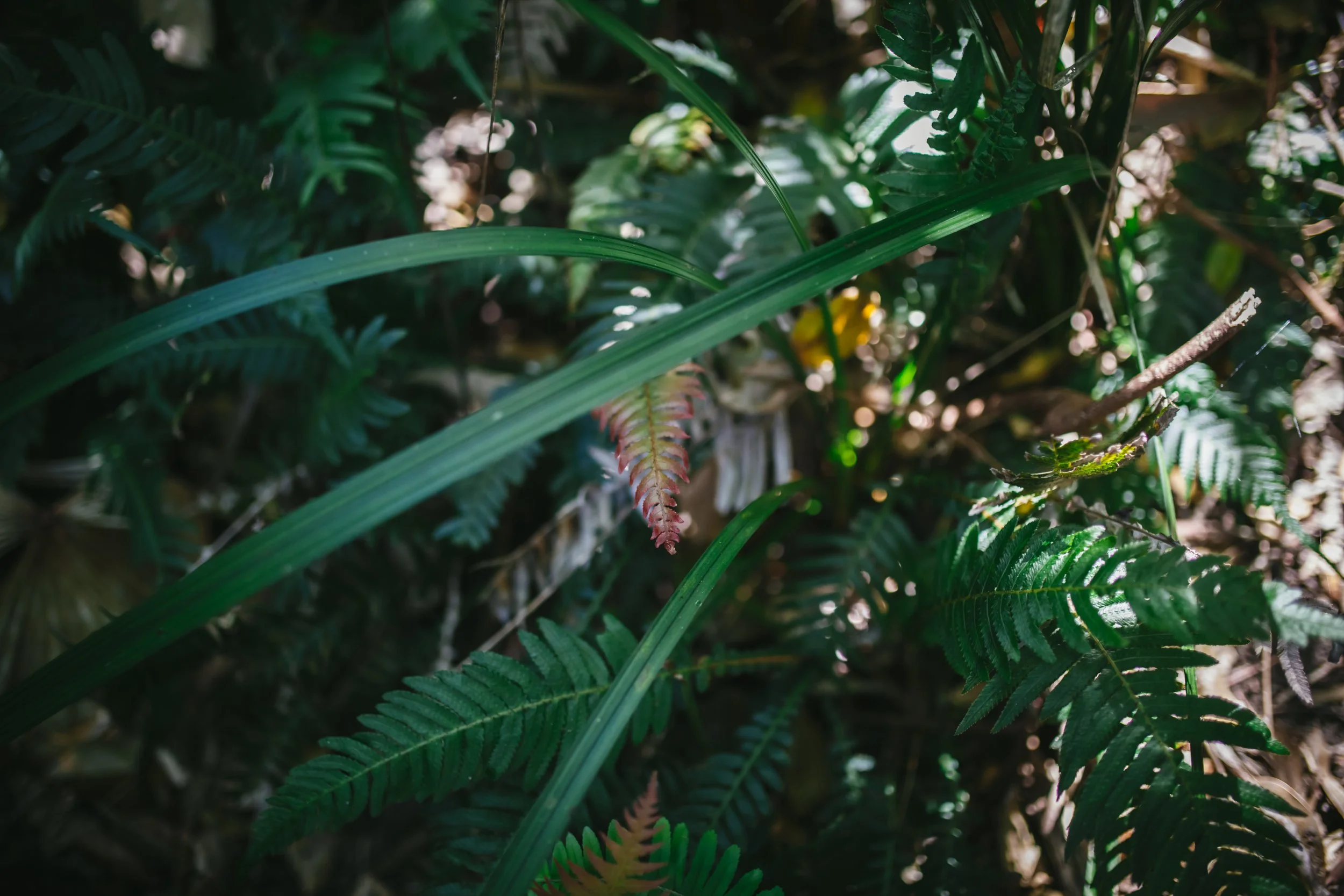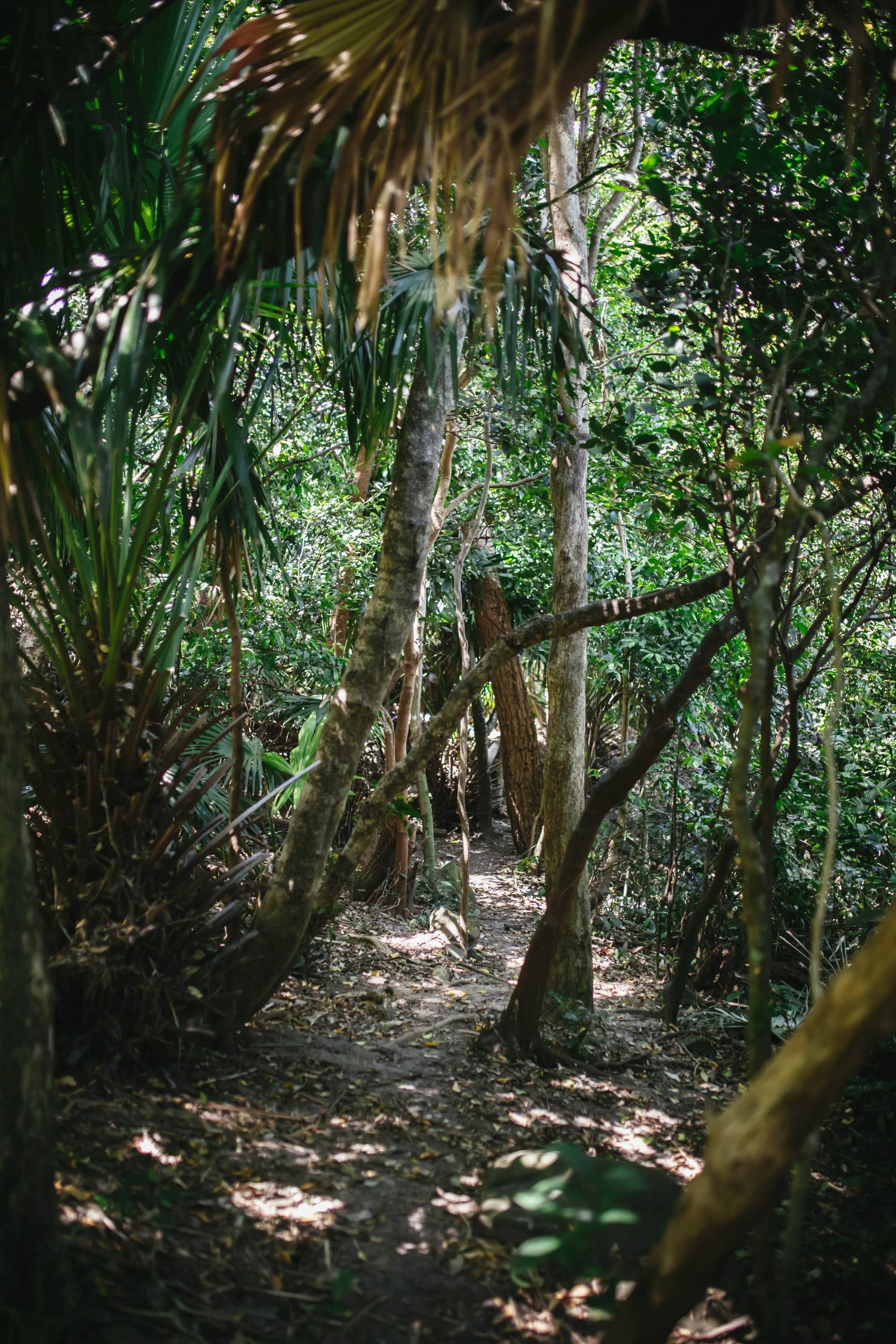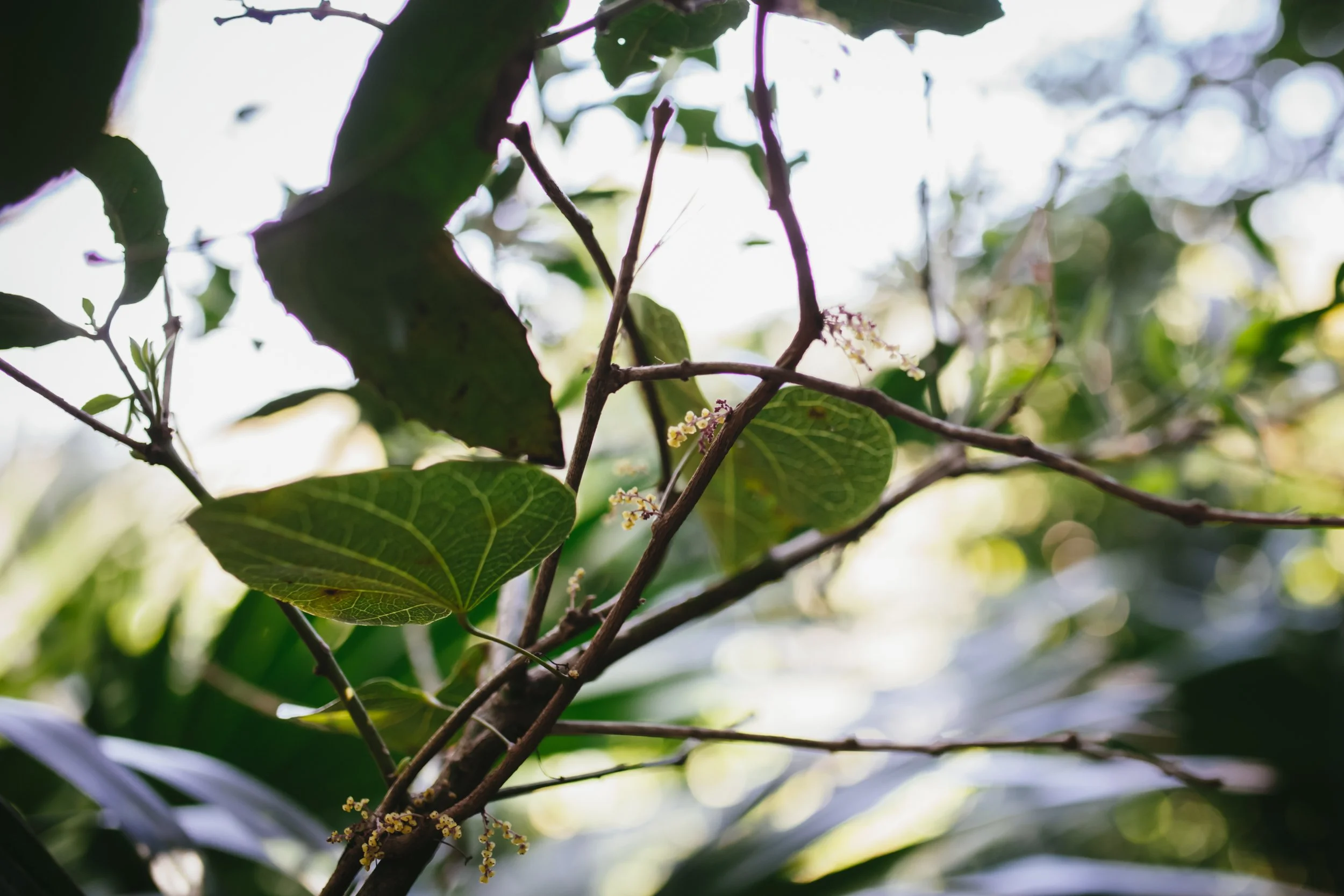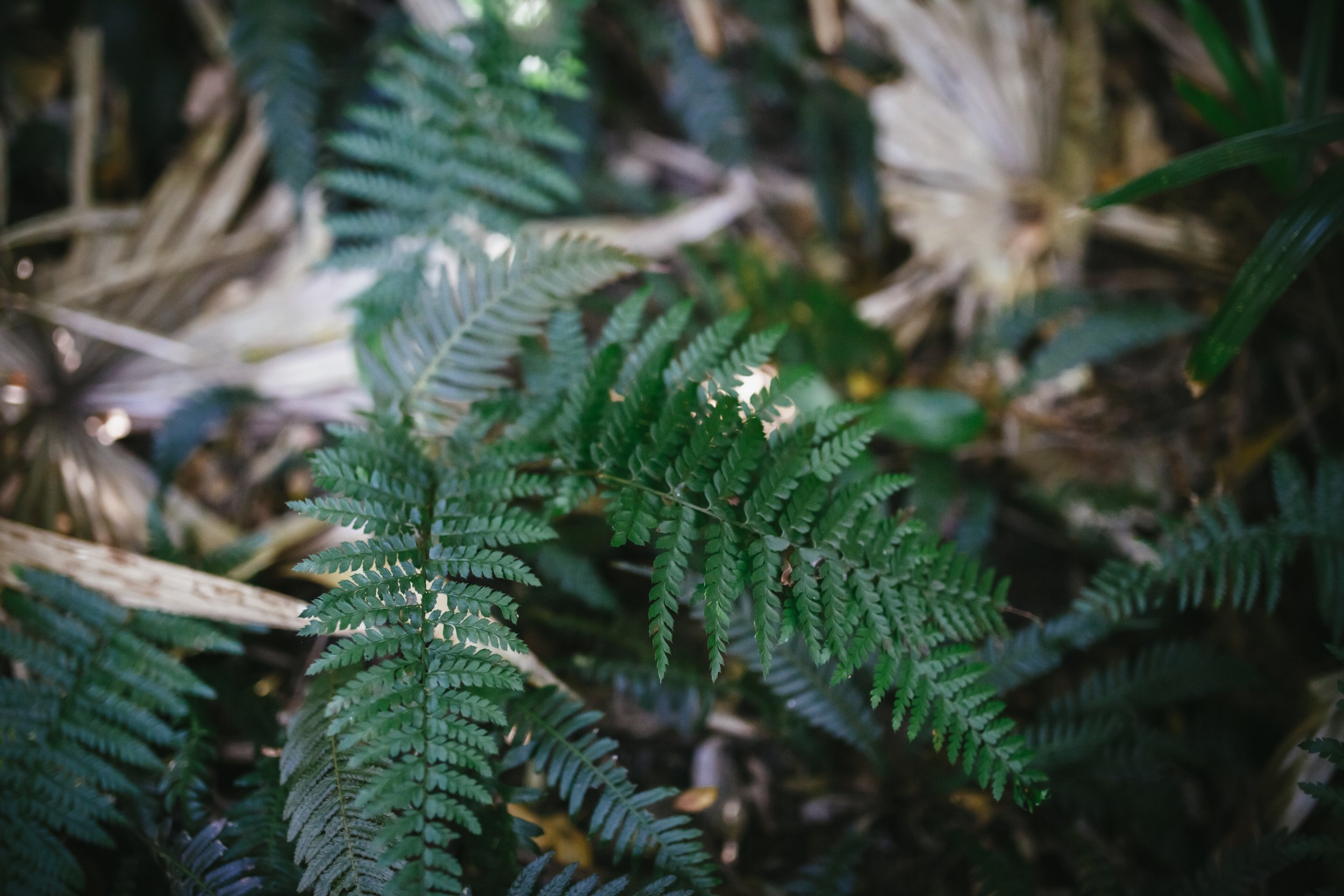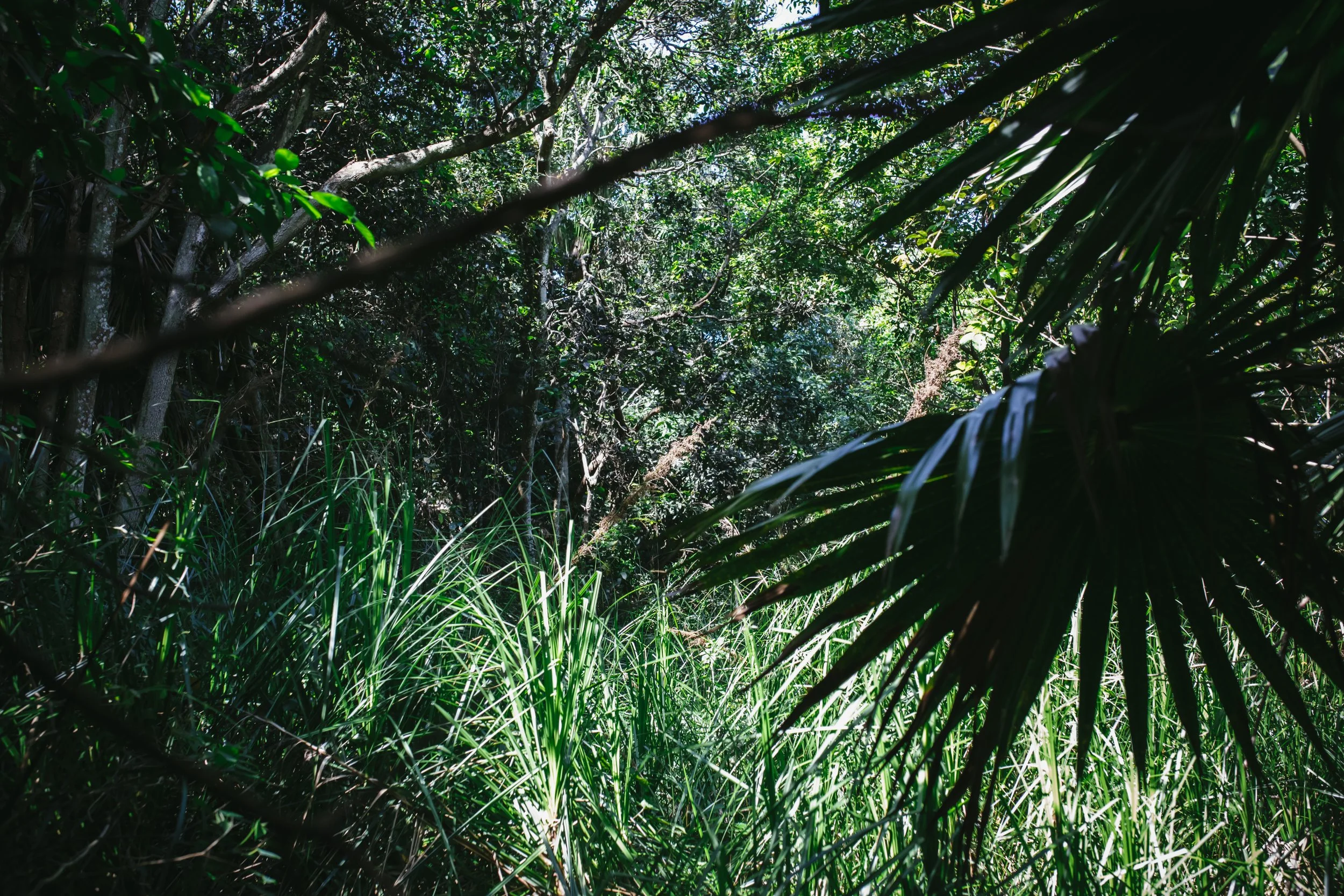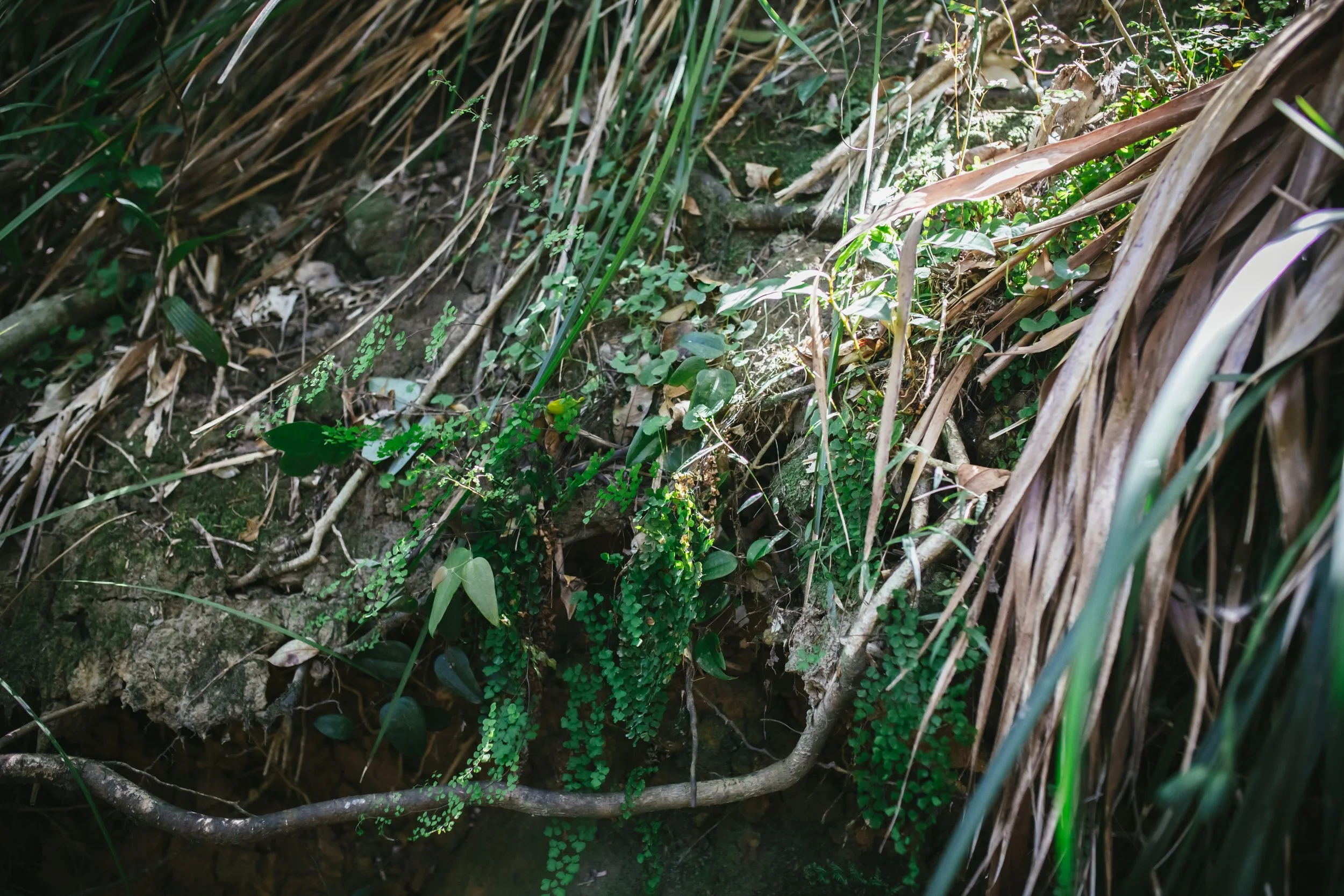Reference Community: Littoral Rainforest EEC, Spotted Gum Forest Variant & Protected Gully Variant
Equilibrium acknowledges that these reference community sites are on Garigal Land. We pay our respects.
Site: Site A- Palmgrove Park, Avalon
Site B - Hamilton Reserve, Bilgola Beach
Note: Whilst the flora was - for the most part - identical in both sites, we have chosen to keep each variant distinct since the composition of the vegetation differed. Site A was a wet-form rainforest and presented with a far more open under-storey than Site B, which was more humid and densley vegetated.
Soil landscape: Watagan - Narrow, convex crests and ridges, steep colluvial sideslopes, occasional sandstone boulders and benches.
Aspect: Both Site A and B are South-East Facing, though Type B (Protected Gully Variant) has the potential to occur across multiple protected aspects, provided it is in close proximity to the coast and has ample water supply
Vegetation type: Rainforest
Flora Lists:
Site A - Palmgrove Park, Avalon Beach
Recorded as occurring:
Canopy
Corymbia maculata (Spotted Gum)
Livistona australis (Cabbage Palm)
Syzygium smithii (Lilly Pilly / Syzygium)
Mid-storey
Acronychia oblongifolia (White Ash)
Breynia oblongifolia (Coffee Bush)
Clerodendrum tomentosum (Hairy Clerodendrum)
Cryptocarya microneura (Murrogun)
Elaeocarpus reticulatus (Blueberry Ash)
Elaeodendron australe (Red Olive-berry)
Eupomatia laurina (Bolwarra)
Ficus coronata (Sandpaper Fig)
Glochidion ferdinandi (Cheese Tree)
Notelaea longifolia (Large Mock-olive)
Pittosporum revolutum (Rough-fruit Pittosporum)
Synoum glandulosum (Scentless Rosewood)
Wikstroemia indica (Tie Bush)
Wilkiea huegeliana (Veiny Wilkiea)
Vines and Scramblers
Morinda jasminoides (Sweet Morinda)
Pandorea jasminoides (Bower Vine)
Pandorea pandorana (Wonga Vine)
Rubus parvifolius (Native Raspberry)
Sarcopetalum harveyanum (PearlVine)
Smilax glyciphylla (Sweet Sarsaparilla)
Tylophora barbata (Bearded Tylophora)
Groundcover (Herbs, Grasses, and Sedges)
Carex longebrachiata (Long-bracted Sedge)
Dianella caerulea (Blue Flax-lily)
Entolasia marginata (Bordered Panic)
Gahnia aspera (Rough Saw-sedge)
Hydrocotyle hirta (Hairy Pennywort)
Oplismenus imbecillis (Basket Grass)
Plectranthus parviflorus (Small-leaf Plectranthus)
Poa affinis (Slender Tussock-grass)
Pseuderanthemum variabile (Pastel Flower)
Rumex brownii (Brown's Dock)
Viola hederacea (Native Violet)
Ferns, Cycads and Conifers
Adiantum aethiopicum (Common Maidenhair)
Adiantum hispidulum (Rough Maidenhair)
Asplenium australasicum (Bird's Nest Fern)
Calochlaena dubia (Soft Bracken)
Christella dentata (Binung)
Cyathea australis (Rough Tree Fern)
Macrozamia communis (Burrawang)
Platycerium bifurcatum (Elkhorn Fern)
Pteridium esculentum (Bracken Fern)
Recorded previously or otherwise projected to occur:
Canopy
Eucalyptus paniculata (Grey Ironbark)
Mid-storey
Acacia implexa (Hickory Wattle)
Backhousia myrtifolia (Grey Myrtle)
Myrsine howittiana (Brush Muttonwood)
Groundcover (Sedges)
Carex inversa (Knot-grass)
Geitonoplesium cymosum (Scrambling Lily)
Lepidosperma laterale (Tall Sword-sedge)
Opercularia aspera (Coarse Stinkweed)
Panicum simile (Two-colour Panic)
Solanum prinophyllum (Forest Nightshade)
Site B - Hamilton Reserve, Bilgola Beach
Recorded as Occurring:
Canopy
Allocasuarina torulosa (Forest Oak)
Eucalyptus botryoides (Bangalay)
Ficus coronata (Sandpaper Fig)
Livistona australis (Cabbage Palm)
Syzygium smithii (Lilly Pilly)
Mid-storey
Acronychia oblongifolia (White Ash)
Breynia oblongifolia (Coffee Bush)
Clerodendrum tomentosum (Hairy Clerodendrum)
Denhamia sylvestris (Denhamia)
Elaeocarpus reticulatus (Blueberry Ash)
Endiandra sieberi (Corkwood)
Eupomatia laurina (Bolwarra)
Glochidion ferdinandi (Cheese Tree)
Notelaea longifolia (Large Mock-olive)
Pittosporum revolutum (Rough-fruit Pittosporum)
Pittosporum undulatum (Sweet Pittosporum)
Synoum glandulosum ssp. glandulosum (Scentless Rosewood)
Wilkiea huegeliana (Veiny Wilkiea)
Vines and Scramblers
Cissus antarctica (Kangaroo Vine)
Cissus hypoglauca (Grape Ivy)
Eustrephus latifolius (Wombat Berry)
Morinda jasminoides (Sweet Morinda)
Pandorea pandorana (Wonga Vine)
Rubus moluccanus (Molucca Bramble)
Sarcopetalum harveyanum (Velvet Vine)
Smilax australis (Austral Sarsaparilla)
Smilax glyciphylla (Sweet Sarsaparilla)
Tylophora barbata (Bearded Tylophora)
Groundcover (Herbs, Grasses, and Sedges)
Carex longebrachiata (Long-bracted Sedge)
Dianella caerulea (Blue Flax-lily)
Entolasia marginata (Bordered Panic)
Gahnia melanocarpa (Black-fruited Saw-sedge)
Gymnostachys anceps (Settlers Flax)
Hydrocotyle laxiflora (Stinking Pennywort)
Lepidosperma elatius (Tall Sword-sedge)
Lobelia pedunculata (Matted Pratia)
Lomandra longifolia (Forest Mat-rush)
Pseuderanthemum variabile (Pastel Flower)
Schelhammera undulata (Lilac Lily)
Viola hederacea (Native Violet)
Viola silicestris (Native Violet)
Ferns, Cycads and Conifers
Adiantum aethiopicum (Common Maidenhair)
Adiantum hispidulum (Rough Maidenhair)
Asplenium australasicum (Bird's Nest Fern)
Blechnum cartilagineum (Gristle Fern)
Cyathea australis (Rough Tree Fern)
Doodia aspera (Rough Rasp Fern)
Hypolepis muelleri (Harsh Ground Fern)
Platycerium bifurcatum (Elkhorn)
Polystichum proliferum (Mother Shield Fern)
Pteridium esculentum (Bracken Fern)
Recorded Previously or otherwise Projected to Occur:
Canopy
Syncarpia glomulifera (Turpentine)
Mid-storey
Backhousia myrtifolia (Grey Myrtle)
Homalanthus populifolius (Bleeding Heart)
Groundcover (Sedges)
Carex inversa (Knot-grass)
Cryptostylis erecta (Bonnet Orchid)
Plantago debilis (Shade Plantain)
In the Spotted Gum Forest Variant, Cabbage Tree Palms (Livistona australis) hang their leaves amongst the midstorey, creating microhabitats for invertebrates and reptiles
Light falls sparsely through the canopy in the late afternoon and allows the deep greens of the foliage to emerge
A Sandpaper Fig (Ficus coronata) producing cauliflorous fruits
The smooth bark of a Spotted Gum (Corymbia maculata) contrasts against the rainforest mid-storey
Big Watagan sandstone boulders support lithophytes such as mosses and lichens
Maiden-Hair Fern (Adiantum aethiopicum)
Sweet Morinda (Morinda jasminoides) climbs the base of a Cabbage Tree Palm (Livistona australis)
Fern gallery: Rough Maiden-Hair (Adiantum hispidulum) and Rasp Fern (Doodia aspera)
False Sarsaparilla (Smilax glyciphylla) tangling about. The red new leaves are nice to chew on whilst walking and have a resiny-spicy flavour!
Bearded Tylophora (Tylophora barbata)
Blueberry Ash (Elaeocarpus reticulatus) about to flower
In our second reference site (Site B), a Bolwarra (Eupomatia laurina) enjoys pockets of sun on its leaves
Rasp Fern (Doodia aspera) peeking up from beneath a log
A view of the canopy. Many textures converge to create a rolling green sea - habitat, food sources, seed for the next generation of rainforest.
Flax (Gymnostachys anceps) is a common feature of the rainforest floor. It has a beautiful flower head and long leaf blades
Light dappling in through the closed canopy
Flax (Gymnostachys anceps) and Rasp Fern (Doodia aspera)
Many textures appear
Though this track is, in fact, cleared, one of the lovely features of rainforests (in particular, where vines are dominant in the canopy) is the ease of traversing. Though the ground is often covered with ferns, grasses, and graminoids, the low-shrub layer remains relatively open because of the limited availability of light
Flower buds on the Pearl Vine (Sarcopetalum harveyanum)
Sandstone Violet (Viola silicestris)
The trunk of a Sandpaper Fig (Ficus coronata) with lichen
A Birds-Nest Fern (Asplenium australasicum) in the nook of a large Scentless Rosewood (Synoum glandulosum)
Mother Shield-Fern (Polystichum proliferum)
A natural perforation in the canopy and plenty of water in the ground creates conditions for a swamp of Tall Saw-Sedge (Gahnia clarkei) to appear
A creek flows downhill and creates a humid habitat for rainforest plants. Creeks should be a common landscape feature, but development often favours the redirection or cessation of natural hydrology, completely changing a landscape. Creeks would have frequently occurred in depressions in the landscape and fed freshwater to the surrounding vegetation.
The water is clear and deep - light shines to the bottom where fragments of eroded sandstone make a creekbed
On the embankment, Maiden-Hair Fern (Adiantum aethiopicum) and False Sarsaparilla (Smilax glyciphylla) grow
